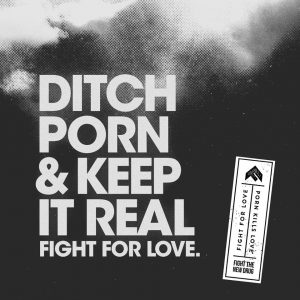It’s no secret that pornography has the potential to be addictive. We get messages every day from people all over the world who struggle with compulsive habits with porn, and research is continually showing how it can become a compulsive habit for consumers of all ages.
The problem is, on top of porn being able to hook any consumer of any age or background, our entire technologically dependent society doesn’t make it any easier to stay away or even realize what we’re being sucked into. It’s the whole package, the digital environment where people consume porn. And while any kind of pornography can definitely be harmful, today’s digital world has certainly elevated pornography to a whole new level… and not in a good way. There are hidden technological forces that may make the struggle to be free from porn even harder.
The reality is, forming habits online isn’t something that “just happens.” Too often, a real porn habit is manufactured in the digital world we click through every day.
Always Connected To Our Phones
Mobile devices provide 24/7 online access anywhere there’s signal. We can see our friends on social media, get news, read emails, play games. Our whole world and anything we could possibly want to know about are all available at the touch of a button. But, let’s face it—we’ve become less connected with the people and the world around us because of those very screens in front of us. We’ve inserted these amazing, handheld computers between ourselves and reality. And that’s not too far off from what porn does, too. It can start to blend reality and fantasy with the rewiring of the consumer’s brain.
Driving more of a wedge between ourselves and human connection is the fact that smartphones and the apps we download offer variable “rewards.” We get notifications, “likes” from our squad, new recipes, offers, fantasy sports updates.
These notifications give us a steady drip of dopamine or induce desire for more. According to Robert Sapolsky, professor of biology at Stanford University, dopamine is not about pleasure, it’s the anticipation of pleasure. The more unpredictable, the more uncertain, the more our bodies produce dopamine. With smartphones, that medley of chimes and alerts and ringtones teach us to always be anticipating, always glued to our device, awaiting the next text.
The fact is, a consumer’s continual connection to the digital world, anticipating those unpredictable alerts, doesn’t make it exactly easy to stay away from potential pornographic rabbit trails that social media can take us on.
Tech That Keeps Us Clicking
While personal computers, the internet, and mobile phones was were achieving widespread use in the 1990’s, people were already trying to figure out how to harness these technologies to influence the behavior of consumers.
Today, companies measure user behavior to design products that “are not just persuasive, but specifically aimed at forging new habits.” In other words, companies want your life to be actively affected by their products in a way that keeps you coming back and keeps you hooked. Sound anything like the porn industry? We thought so, too.
Advertisers use these persuasive techs to optimize for the most clicks, putting up sexualized, weird, or cute images just to get us to click through. Again, there’s this anticipation of what awaits on the other side of that click. Again, there’s a release of dopamine. And, that’s not too far off from a porn consumer getting a neurological dopamine rush for clicking through to the next image or video on a porn site.
Persuasion technology is sold as a way to provide consumers with a more personalized, relevant online experience. On the surface, that sounds good, right? Ultimately, though, persuasion technology’s main purpose is money and profits for the company using it, regardless of the effect on shoppers.
The porn industry is no different. With campaigns to normalize porn, efforts to hijacking the neural pathways of viewers, and to create lifelong customers, the industry is only about making money. The industry absolutely doesn’t care about the countless lives harmed by obsessive consumption, or the sex trafficking industry it fuels, or the normalization of child pornography it causes.
Persuasion technology is all around us, used by both porn and non-porn companies alike. That’s part of the reason why society doesn’t see watching porn as that big of a deal, it’s all just part of the bigger picture of the media we consume.
But we know that porn isn’t just harmless entertainment, and science and research are continuing to show that.
There Is Hope For Change
There are ways to reject the perfectly packaged and normalized porn culture around us. We don’t have to be conditioned in unhealthy ways to believe that porn is just part of our digital world, and we just “have to accept it.” We can actively fight back and raise awareness. We can utilize those same technologies used to condition us to check email, click through ads and obsessively check for Instagram “likes” and comments to actively fight for love and shine a spotlight on the real harms of porn. The same smartphone that might be part of a struggle with porn can be a weapon for education and awareness.
That’s where Fight the New Drug comes in. We’re guessing you might be on a phone, right? Over 75% of visitors to our website get here through mobile devices, and our website is designed to make it easy to get the information needed to understand how pornography affects the brain, the mind and the world.
Most importantly, there is you. The Fighters. We arm you with knowledge about how porn harms and provide the tools to help spread the word and start conversations. Together, we can make a difference and fight for real love, and collectively break away from the digital traps that the porn industry sets up for its viewers to get hooked into before they even realize it.
Together, we can expose the reality of the industry for what it is, and make a positive change. You with us?
Citations
[1]Bosker, Bianca. (2016). The Binge Breaker. The Atlantic. Nov. 2016, https://www.theatlantic.com/magazine/archive/2016/11/the-binge-breaker/501122/
[2] Peters, R. W., Lederer, L. J., and Kelly, S. (2012). The Slave and the Porn Star: Sexual Trafficking and Pornography. In M. Mattar and J. Braunmiller (Eds.) Journal of Human Rights and Civil Society 5: 1-21; U.S. Attorney’s Office for the Western District of Missouri. (2010). Woman Tortured as Slave, Victim of Trafficking and Forced Labor. Press Release, September 9. http://www.justice.gov/usao/mw/news2010/bagley.ind.htm
Your Support Matters Now More Than Ever
Most kids today are exposed to porn by the age of 12. By the time they’re teenagers, 75% of boys and 70% of girls have already viewed itRobb, M.B., & Mann, S. (2023). Teens and pornography. San Francisco, CA: Common Sense.Copy —often before they’ve had a single healthy conversation about it.
Even more concerning: over half of boys and nearly 40% of girls believe porn is a realistic depiction of sexMartellozzo, E., Monaghan, A., Adler, J. R., Davidson, J., Leyva, R., & Horvath, M. A. H. (2016). “I wasn’t sure it was normal to watch it”: A quantitative and qualitative examination of the impact of online pornography on the values, attitudes, beliefs and behaviours of children and young people. Middlesex University, NSPCC, & Office of the Children’s Commissioner.Copy . And among teens who have seen porn, more than 79% of teens use it to learn how to have sexRobb, M.B., & Mann, S. (2023). Teens and pornography. San Francisco, CA: Common Sense.Copy . That means millions of young people are getting sex ed from violent, degrading content, which becomes their baseline understanding of intimacy. Out of the most popular porn, 33%-88% of videos contain physical aggression and nonconsensual violence-related themesFritz, N., Malic, V., Paul, B., & Zhou, Y. (2020). A descriptive analysis of the types, targets, and relative frequency of aggression in mainstream pornography. Archives of Sexual Behavior, 49(8), 3041-3053. doi:10.1007/s10508-020-01773-0Copy Bridges et al., 2010, “Aggression and Sexual Behavior in Best-Selling Pornography Videos: A Content Analysis,” Violence Against Women.Copy .
From increasing rates of loneliness, depression, and self-doubt, to distorted views of sex, reduced relationship satisfaction, and riskier sexual behavior among teens, porn is impacting individuals, relationships, and society worldwideFight the New Drug. (2024, May). Get the Facts (Series of web articles). Fight the New Drug.Copy .
This is why Fight the New Drug exists—but we can’t do it without you.
Your donation directly fuels the creation of new educational resources, including our awareness-raising videos, podcasts, research-driven articles, engaging school presentations, and digital tools that reach youth where they are: online and in school. It equips individuals, parents, educators, and youth with trustworthy resources to start the conversation.
Will you join us? We’re grateful for whatever you can give—but a recurring donation makes the biggest difference. Every dollar directly supports our vital work, and every individual we reach decreases sexual exploitation. Let’s fight for real love:


